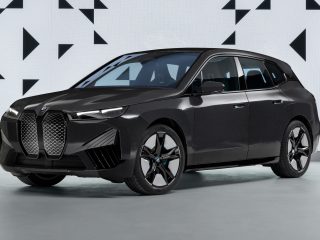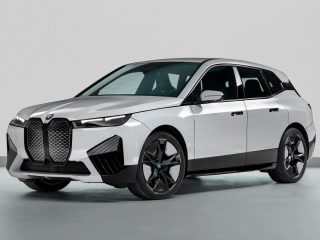BMW’s latest viral hit was a colour-changing EV. We talk to Dr Stella Clarke, the Australian engineer behind the mind-bending concept.
Earlier this year, at the Consumer Electronics Show (CES), BMW revealed an incredible new technology concept that would challenge the perceived limits of personalisation: an exterior that could change colour, display flowing patterns, ashes of information, text and alerts.
A fter the videos of the launch went viral, internet commentators swore it was CGI – it wasn’t. The technology behind the e ffect was actually the same stuff found in Amazon Kindles, an MIT-developed material known as E Ink. What made it even harder for people to believe is that covering the iX Flow was not a number of tiny digital screens but a highly flexible mass of tiny capsules the size of a human hair. Inside the capsules are layers of electrodes and charged colour pigments that, when a speci fic voltage is run through the electrodes, mix together or separate to create a programmed pattern on the surface of the car.
Dr Stella Clarke is the brains and lead engineer behind the concept. Hailing from Sydney and now Munich-based, the Mechanical Engineer pitched the project to BMW via one of its internal technology incubator programmes. With a background in mechatronics and a PhD in robotics from the Technical University of Munich, Clarke had been working with interior haptics within BMW when she came up with the idea of a potential use case for E Ink.
“It is an interesting material, and over the past decade, it’s been pretty much just an e-reader technology, but it had much more potential, especially in automotive,” she tells Automotive Daily.
“I tried to pitch to my colleagues and it was tough because new things are always hard to get your head around. I had been working with interiors, so the colleagues closest to me were the display colleagues, and they straightaway said, ‘no, it doesn’t meet temperature requirements.’” Clarke explains that E Ink had never been tested at the extreme temperatures BMW requires its cars to perform – around -40 to 80 degrees, and over 100 degrees for some interior components.
Eventually, Clarke convinced BMW the application was worth prototyping further, and was granted a modest budget to start the project. A fter exploring interiors, she started to consider exteriors, which proved to be a much cooler and functional use case. “I was convinced with the technology,” she says, explaining why she was attracted to E Ink.
“It’s bio-stable, so you can turn the power o and it will hold whatever state it was in. It is extremely low energy and the material can even be cut and it still works.”
In terms of use, the car could tell you the charge percentage, it might ash in the case of an onroad emergency, it might change colour to alert you where your car is parked or change from dark to light to adjust to the outside temperature. It could be triggered by any number of inputs, and it can do all of this without impacting the EV’s battery and while the vehicle is switched o . And it works with a range of colours.
Clarke is now looking at further use cases of the material and wading through the process of how a technology might move from prototype to production line. So no, this isn’t going to land at your local BMW dealership anytime soon.
“We have a lot of questions to answer,” she says. “But if we’re talking about sustainability, when it comes to dynamically showing information. I’m not sure there is a more sustainable technology to do with. I think everything you’d be competing with would consume more energy and would not be bio-stable. Obviously, if you don’t want dynamic change, that needs no electricity at all. But if you’re talking about really having something changeable, then this, the technology in and of itself is sustainable.”
Noelle Faulkner










